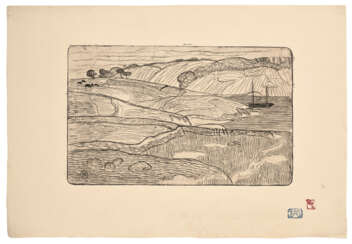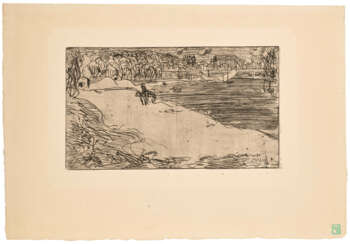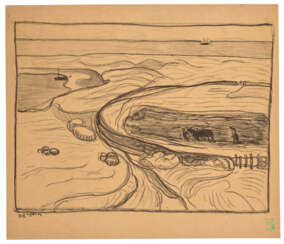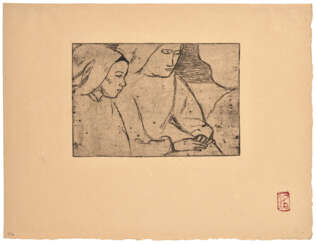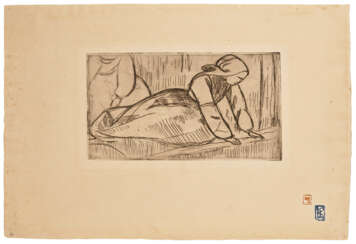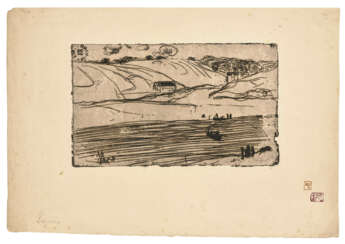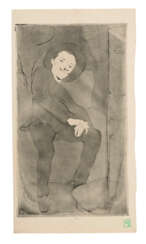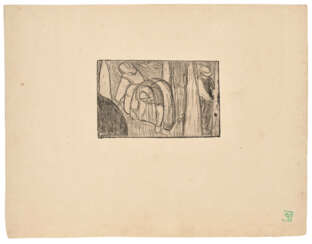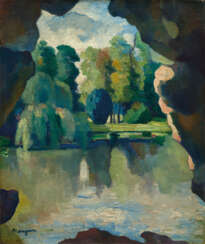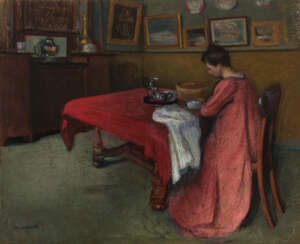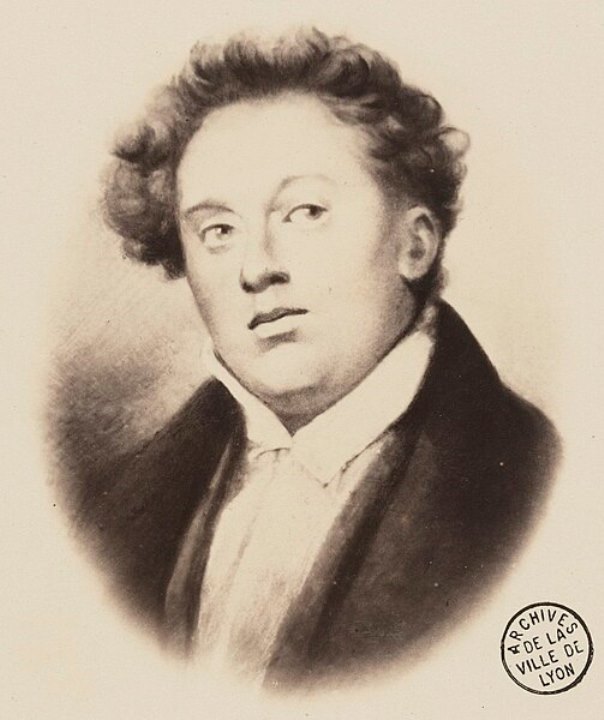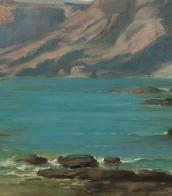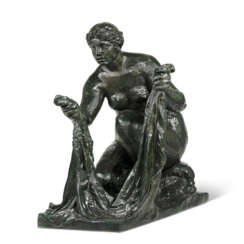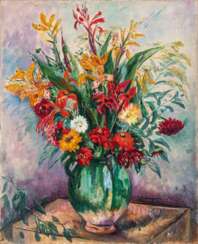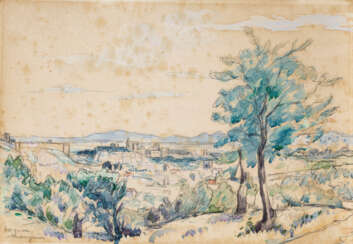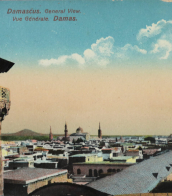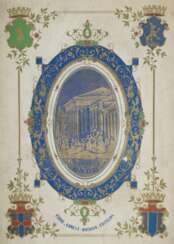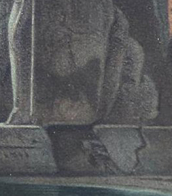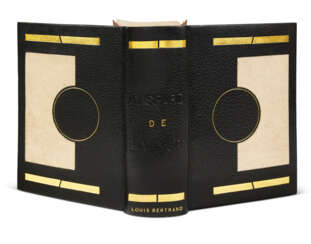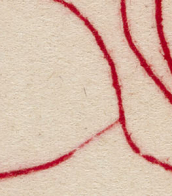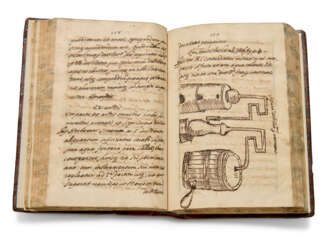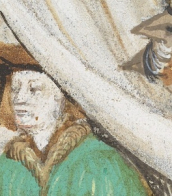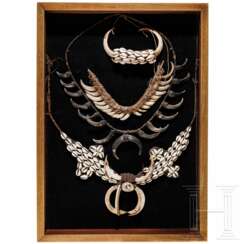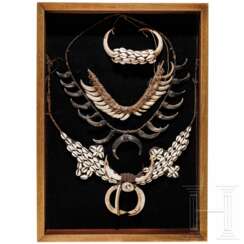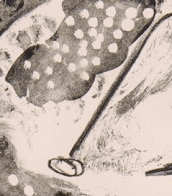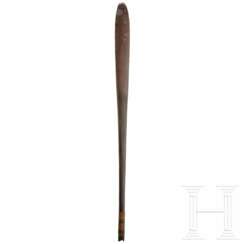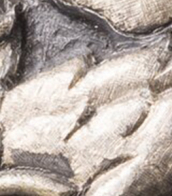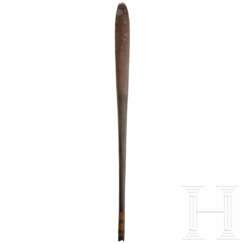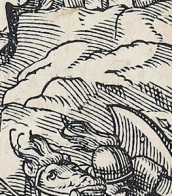guinée

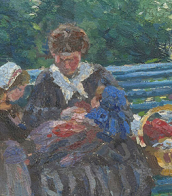














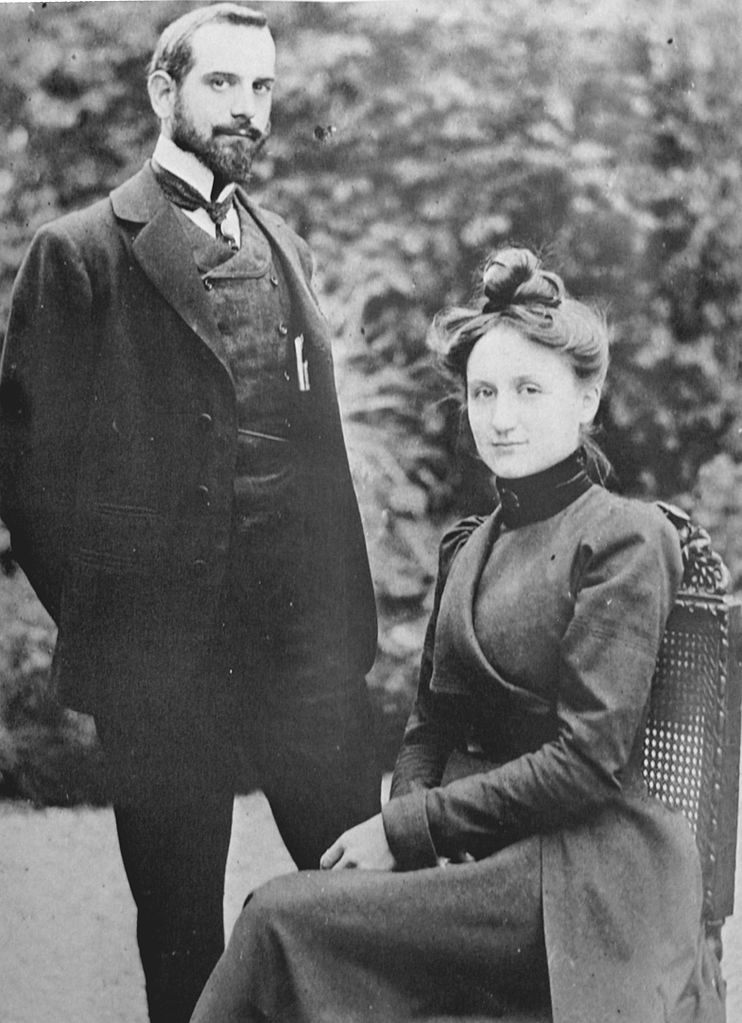
Henri Charles Manguin was a French painter, renowned for his vital role in the Fauvism movement, alongside luminaries such as André Derain and Henri Matisse. Born on March 23, 1874, in Paris, Manguin studied under Gustave Moreau at the École des Beaux-Arts, where he developed close ties with Henri Matisse and Charles Camoin. His work is characterized by the use of bright pastel hues and a fascination with Mediterranean landscapes, which became the hallmark of his career. Manguin's talent for capturing the vivid colors of the French Riviera and the joyful essence of its nude bathers earned him the nickname "the voluptuous painter" by Apollinaire.
Manguin's career was marked by several significant milestones, including his participation in the pivotal Salon d'Automne exhibition of 1905, which historically marks the birth of Fauvism. The critic Louis Vauxcelles famously described the Fauves' work with the phrase "Donatello among the wild beasts," highlighting the contrast between their vibrant paintings and a Renaissance-style sculpture present in the same room. In 1906, Ambrose Vollard, a major art dealer, recognized Manguin's genius, purchasing over a hundred of his canvases. Manguin continued to embrace the Fauvist vision throughout his life, dividing his time between Paris and the Riviera, and finally settling in Saint-Tropez, where he passed away on September 25, 1949.
Manguin's legacy is preserved in the collections of several major museums around the world, including the Pushkin Museum in Moscow, the Museum of Modern Art in New York, and the Musée d'Orsay in Paris. His works, such as "Baigneuse" (1906) at the Pushkin Museum and "La Baigneuse" (1906) at the Museum of Grenoble, showcase his mastery of color and form.
For collectors and experts in art and antiques, Manguin's oeuvre represents a critical chapter in the evolution of modern art, capturing the luminosity and vibrancy of the early 20th century's avant-garde movements. His contributions to Fauvism not only underline the movement's break from Impressionism but also its role in paving the way for the expressive possibilities of color in modern art.
To stay informed about new sales and auction events featuring Henri Charles Manguin's work, we invite you to sign up for updates. This subscription is tailored for enthusiasts eager to enrich their collections with pieces from this pivotal Artist and ensures you're among the first to know about opportunities to acquire his celebrated works.
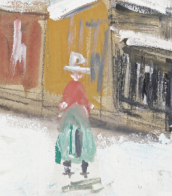

Henri Charles Manguin was a French painter, renowned for his vital role in the Fauvism movement, alongside luminaries such as André Derain and Henri Matisse. Born on March 23, 1874, in Paris, Manguin studied under Gustave Moreau at the École des Beaux-Arts, where he developed close ties with Henri Matisse and Charles Camoin. His work is characterized by the use of bright pastel hues and a fascination with Mediterranean landscapes, which became the hallmark of his career. Manguin's talent for capturing the vivid colors of the French Riviera and the joyful essence of its nude bathers earned him the nickname "the voluptuous painter" by Apollinaire.
Manguin's career was marked by several significant milestones, including his participation in the pivotal Salon d'Automne exhibition of 1905, which historically marks the birth of Fauvism. The critic Louis Vauxcelles famously described the Fauves' work with the phrase "Donatello among the wild beasts," highlighting the contrast between their vibrant paintings and a Renaissance-style sculpture present in the same room. In 1906, Ambrose Vollard, a major art dealer, recognized Manguin's genius, purchasing over a hundred of his canvases. Manguin continued to embrace the Fauvist vision throughout his life, dividing his time between Paris and the Riviera, and finally settling in Saint-Tropez, where he passed away on September 25, 1949.
Manguin's legacy is preserved in the collections of several major museums around the world, including the Pushkin Museum in Moscow, the Museum of Modern Art in New York, and the Musée d'Orsay in Paris. His works, such as "Baigneuse" (1906) at the Pushkin Museum and "La Baigneuse" (1906) at the Museum of Grenoble, showcase his mastery of color and form.
For collectors and experts in art and antiques, Manguin's oeuvre represents a critical chapter in the evolution of modern art, capturing the luminosity and vibrancy of the early 20th century's avant-garde movements. His contributions to Fauvism not only underline the movement's break from Impressionism but also its role in paving the way for the expressive possibilities of color in modern art.
To stay informed about new sales and auction events featuring Henri Charles Manguin's work, we invite you to sign up for updates. This subscription is tailored for enthusiasts eager to enrich their collections with pieces from this pivotal Artist and ensures you're among the first to know about opportunities to acquire his celebrated works.
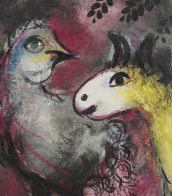

Henri Charles Manguin was a French painter, renowned for his vital role in the Fauvism movement, alongside luminaries such as André Derain and Henri Matisse. Born on March 23, 1874, in Paris, Manguin studied under Gustave Moreau at the École des Beaux-Arts, where he developed close ties with Henri Matisse and Charles Camoin. His work is characterized by the use of bright pastel hues and a fascination with Mediterranean landscapes, which became the hallmark of his career. Manguin's talent for capturing the vivid colors of the French Riviera and the joyful essence of its nude bathers earned him the nickname "the voluptuous painter" by Apollinaire.
Manguin's career was marked by several significant milestones, including his participation in the pivotal Salon d'Automne exhibition of 1905, which historically marks the birth of Fauvism. The critic Louis Vauxcelles famously described the Fauves' work with the phrase "Donatello among the wild beasts," highlighting the contrast between their vibrant paintings and a Renaissance-style sculpture present in the same room. In 1906, Ambrose Vollard, a major art dealer, recognized Manguin's genius, purchasing over a hundred of his canvases. Manguin continued to embrace the Fauvist vision throughout his life, dividing his time between Paris and the Riviera, and finally settling in Saint-Tropez, where he passed away on September 25, 1949.
Manguin's legacy is preserved in the collections of several major museums around the world, including the Pushkin Museum in Moscow, the Museum of Modern Art in New York, and the Musée d'Orsay in Paris. His works, such as "Baigneuse" (1906) at the Pushkin Museum and "La Baigneuse" (1906) at the Museum of Grenoble, showcase his mastery of color and form.
For collectors and experts in art and antiques, Manguin's oeuvre represents a critical chapter in the evolution of modern art, capturing the luminosity and vibrancy of the early 20th century's avant-garde movements. His contributions to Fauvism not only underline the movement's break from Impressionism but also its role in paving the way for the expressive possibilities of color in modern art.
To stay informed about new sales and auction events featuring Henri Charles Manguin's work, we invite you to sign up for updates. This subscription is tailored for enthusiasts eager to enrich their collections with pieces from this pivotal Artist and ensures you're among the first to know about opportunities to acquire his celebrated works.
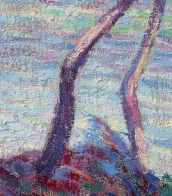

Henri Charles Manguin was a French painter, renowned for his vital role in the Fauvism movement, alongside luminaries such as André Derain and Henri Matisse. Born on March 23, 1874, in Paris, Manguin studied under Gustave Moreau at the École des Beaux-Arts, where he developed close ties with Henri Matisse and Charles Camoin. His work is characterized by the use of bright pastel hues and a fascination with Mediterranean landscapes, which became the hallmark of his career. Manguin's talent for capturing the vivid colors of the French Riviera and the joyful essence of its nude bathers earned him the nickname "the voluptuous painter" by Apollinaire.
Manguin's career was marked by several significant milestones, including his participation in the pivotal Salon d'Automne exhibition of 1905, which historically marks the birth of Fauvism. The critic Louis Vauxcelles famously described the Fauves' work with the phrase "Donatello among the wild beasts," highlighting the contrast between their vibrant paintings and a Renaissance-style sculpture present in the same room. In 1906, Ambrose Vollard, a major art dealer, recognized Manguin's genius, purchasing over a hundred of his canvases. Manguin continued to embrace the Fauvist vision throughout his life, dividing his time between Paris and the Riviera, and finally settling in Saint-Tropez, where he passed away on September 25, 1949.
Manguin's legacy is preserved in the collections of several major museums around the world, including the Pushkin Museum in Moscow, the Museum of Modern Art in New York, and the Musée d'Orsay in Paris. His works, such as "Baigneuse" (1906) at the Pushkin Museum and "La Baigneuse" (1906) at the Museum of Grenoble, showcase his mastery of color and form.
For collectors and experts in art and antiques, Manguin's oeuvre represents a critical chapter in the evolution of modern art, capturing the luminosity and vibrancy of the early 20th century's avant-garde movements. His contributions to Fauvism not only underline the movement's break from Impressionism but also its role in paving the way for the expressive possibilities of color in modern art.
To stay informed about new sales and auction events featuring Henri Charles Manguin's work, we invite you to sign up for updates. This subscription is tailored for enthusiasts eager to enrich their collections with pieces from this pivotal Artist and ensures you're among the first to know about opportunities to acquire his celebrated works.
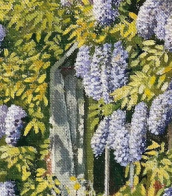
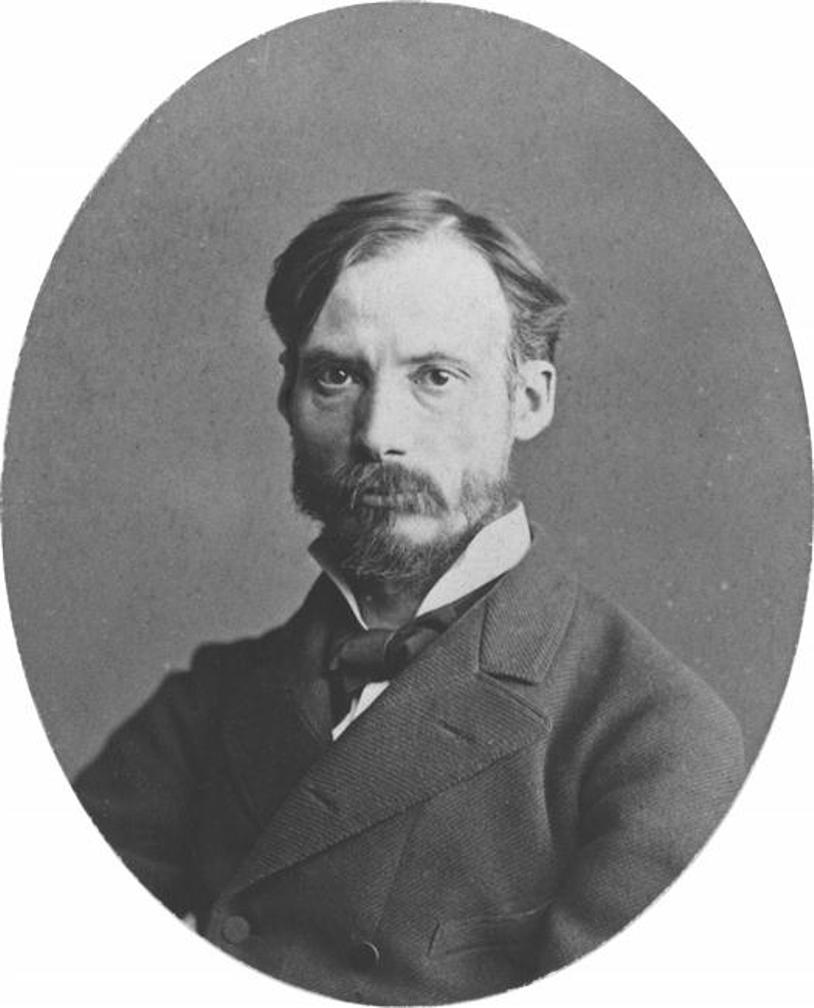
Pierre-Auguste Renoir was a French artist, celebrated as a pivotal figure in the development of the Impressionist movement. Born in Limoges, France, in 1841, Renoir's early experiences in Paris and his apprenticeship as a porcelain painter laid the foundation for his illustrious career in art. His transition to painting was marked by an early fascination with the play of light and color, which became a hallmark of his work. Renoir's paintings are renowned for their vibrant light and saturated color, often focusing on people in intimate and candid compositions. This focus on beauty and a particular affinity for capturing the sensuality of the female form distinguished his work from his contemporaries.
Renoir's contributions to Impressionism were significant, characterized by his use of bright colors and a technique that captured the movement and luminosity of the scene. His evolution as an artist saw him experimenting with a more linear and classical style, especially after his travels to Italy, where he was deeply influenced by the Renaissance masters. Despite facing personal challenges, including severe rheumatoid arthritis in his later years, Renoir's passion for painting never waned. His determination saw him adapting his painting technique to his physical limitations, ensuring that his creative output remained prolific until his death in 1919.
Among Renoir's notable works are "Bal du moulin de la Galette" (1876), "Luncheon of the Boating Party" (1880), and "Girls at the Piano" (1892). These masterpieces exemplify the essence of Impressionist art with their depiction of light, movement, and everyday life. Renoir's works are housed in prestigious museums around the world, serving as a testament to his enduring legacy in the realm of art.
For art collectors and experts, Renoir's oeuvre represents an essential segment of the Impressionist movement, offering insights into the evolution of modern art. His mastery in portraying the beauty of the moment and the depth of human emotion continues to captivate and inspire audiences worldwide.
If you are passionate about collecting or studying the works of Pierre-Auguste Renoir, we invite you to sign up for updates on new product sales and auction events related to this iconic artist. Stay informed about the opportunity to own a piece of art history and deepen your appreciation for the rich tapestry of culture and art that Renoir helped weave.
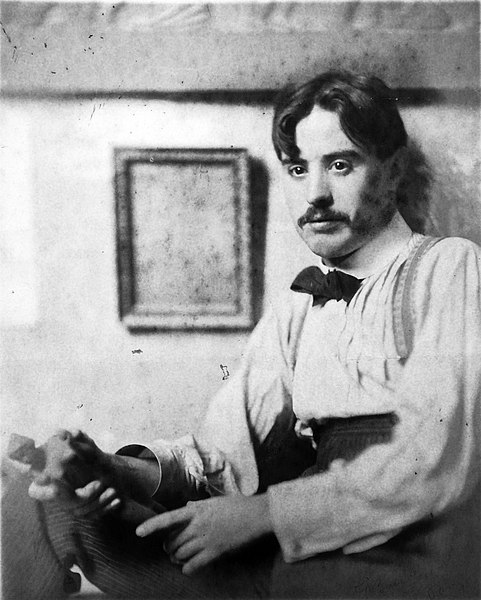
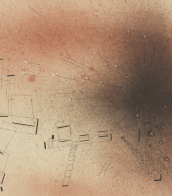

Henri Charles Manguin was a French painter, renowned for his vital role in the Fauvism movement, alongside luminaries such as André Derain and Henri Matisse. Born on March 23, 1874, in Paris, Manguin studied under Gustave Moreau at the École des Beaux-Arts, where he developed close ties with Henri Matisse and Charles Camoin. His work is characterized by the use of bright pastel hues and a fascination with Mediterranean landscapes, which became the hallmark of his career. Manguin's talent for capturing the vivid colors of the French Riviera and the joyful essence of its nude bathers earned him the nickname "the voluptuous painter" by Apollinaire.
Manguin's career was marked by several significant milestones, including his participation in the pivotal Salon d'Automne exhibition of 1905, which historically marks the birth of Fauvism. The critic Louis Vauxcelles famously described the Fauves' work with the phrase "Donatello among the wild beasts," highlighting the contrast between their vibrant paintings and a Renaissance-style sculpture present in the same room. In 1906, Ambrose Vollard, a major art dealer, recognized Manguin's genius, purchasing over a hundred of his canvases. Manguin continued to embrace the Fauvist vision throughout his life, dividing his time between Paris and the Riviera, and finally settling in Saint-Tropez, where he passed away on September 25, 1949.
Manguin's legacy is preserved in the collections of several major museums around the world, including the Pushkin Museum in Moscow, the Museum of Modern Art in New York, and the Musée d'Orsay in Paris. His works, such as "Baigneuse" (1906) at the Pushkin Museum and "La Baigneuse" (1906) at the Museum of Grenoble, showcase his mastery of color and form.
For collectors and experts in art and antiques, Manguin's oeuvre represents a critical chapter in the evolution of modern art, capturing the luminosity and vibrancy of the early 20th century's avant-garde movements. His contributions to Fauvism not only underline the movement's break from Impressionism but also its role in paving the way for the expressive possibilities of color in modern art.
To stay informed about new sales and auction events featuring Henri Charles Manguin's work, we invite you to sign up for updates. This subscription is tailored for enthusiasts eager to enrich their collections with pieces from this pivotal Artist and ensures you're among the first to know about opportunities to acquire his celebrated works.
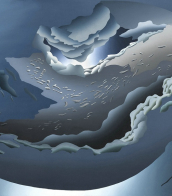

Henri Charles Manguin was a French painter, renowned for his vital role in the Fauvism movement, alongside luminaries such as André Derain and Henri Matisse. Born on March 23, 1874, in Paris, Manguin studied under Gustave Moreau at the École des Beaux-Arts, where he developed close ties with Henri Matisse and Charles Camoin. His work is characterized by the use of bright pastel hues and a fascination with Mediterranean landscapes, which became the hallmark of his career. Manguin's talent for capturing the vivid colors of the French Riviera and the joyful essence of its nude bathers earned him the nickname "the voluptuous painter" by Apollinaire.
Manguin's career was marked by several significant milestones, including his participation in the pivotal Salon d'Automne exhibition of 1905, which historically marks the birth of Fauvism. The critic Louis Vauxcelles famously described the Fauves' work with the phrase "Donatello among the wild beasts," highlighting the contrast between their vibrant paintings and a Renaissance-style sculpture present in the same room. In 1906, Ambrose Vollard, a major art dealer, recognized Manguin's genius, purchasing over a hundred of his canvases. Manguin continued to embrace the Fauvist vision throughout his life, dividing his time between Paris and the Riviera, and finally settling in Saint-Tropez, where he passed away on September 25, 1949.
Manguin's legacy is preserved in the collections of several major museums around the world, including the Pushkin Museum in Moscow, the Museum of Modern Art in New York, and the Musée d'Orsay in Paris. His works, such as "Baigneuse" (1906) at the Pushkin Museum and "La Baigneuse" (1906) at the Museum of Grenoble, showcase his mastery of color and form.
For collectors and experts in art and antiques, Manguin's oeuvre represents a critical chapter in the evolution of modern art, capturing the luminosity and vibrancy of the early 20th century's avant-garde movements. His contributions to Fauvism not only underline the movement's break from Impressionism but also its role in paving the way for the expressive possibilities of color in modern art.
To stay informed about new sales and auction events featuring Henri Charles Manguin's work, we invite you to sign up for updates. This subscription is tailored for enthusiasts eager to enrich their collections with pieces from this pivotal Artist and ensures you're among the first to know about opportunities to acquire his celebrated works.

